If you’re too literal with root word translations you might think biophilia refers to someone who loves (“philia”) themselves (their biography…). Yet, biophilia is something we can all appreciate — a love of nature and living things. Even agoraphobes can benefit from biophilic design. So, what is biophilic design? This article explains that, plus the benefits, and where storage solutions can fit in.
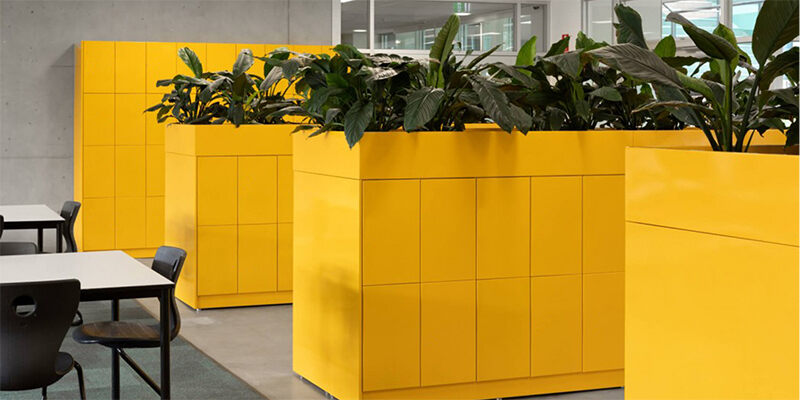
What is Biophilic Design?
In answering the question, what is biophilic design, it is first important to realize it is a lot more than bringing plants into the work setting. Designers can take this love of natural elements so far as to create entire biophilic buildings.
The design trend began in the 1980s. Edward O Wilson coined the term when publishing his book Biophilia. He endorsed the idea that being surrounded by natural elements connects us more “to the wider world and our innate desire to protect and nurture that which feeds us and does us good, both physically and also emotionally.”
Adults spend the majority of their waking hours working. Yes, COVID-19 saw more people working from home. Yet, no matter if they’re turning up to an office job, picking in a warehouse or working remotely, people are proven to feel more connected and calm when they have contact with nature in the built environment.
By the way, a love of nature and living things doesn’t have to extend to inviting critters to make homes in your warehouse or library. Though you could try a bring your dog to work day – that is another way to achieve some of nature-centric design benefits discussed next.
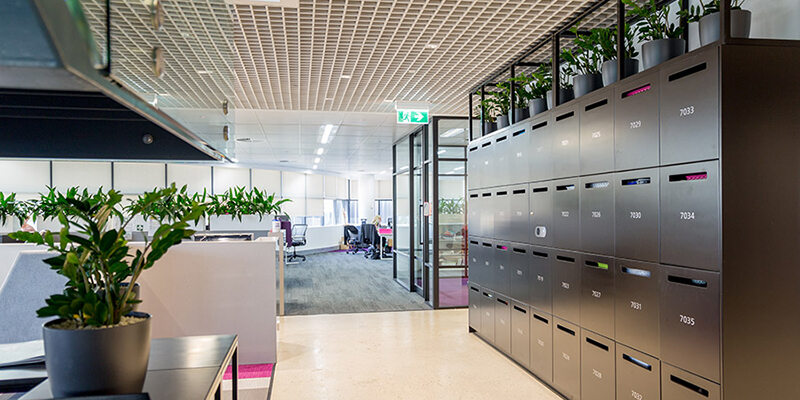
Benefits of Biophilic Design
Green designers don’t have to work too hard to convince their customers of the value of this approach. After all, many have experienced the lethargy that comes from working in a drab, dark space away from natural light and fresh air.
Still, you may need to report on the benefits of incorporating natural elements in design and architecture. These include:
- Positive impacts on health and wellbeing — a practical benefit of bringing plants and flowers into the work environment is the recycling of clean air, which can improve people’s healing rates.
- Improved productivity — being exposed to natural light and other biophilic elements helps energize employees and improve their concentration levels
- Increased creativity — when the workspace has natural elements it feels more calming and creativity is amplified when we can reduce stress
- Decreased absenteeism — in one University of Oregon study, employees who worked in environments that did not connect with nature were more likely to be absent. In fact, a person’s view was a primary predictor of absenteeism
- Support of staff retention — improved health and wellbeing along with greater creativity and productivity will make staff happier at work
These benefits of biophilia design are making biophilia office designs increasingly common. Yet, the advantages aren’t enjoyed only in office settings. Next, we’ll explore how storage solutions can support biophilia in all sorts of work environments.
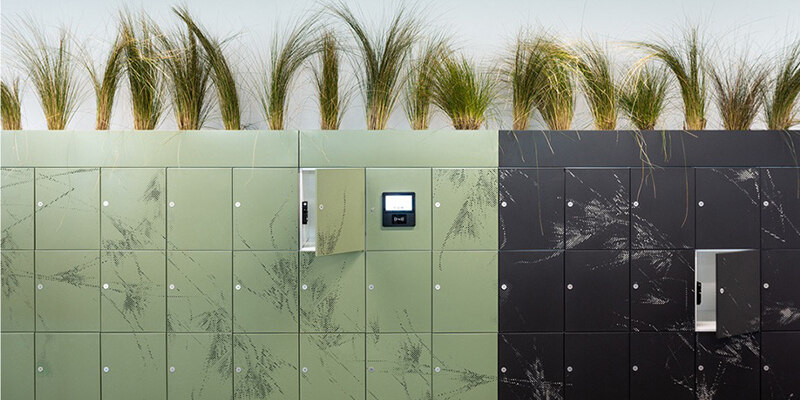
Biophilia in Architecture
You’ve already seen biophilia in architecture if you’ve ever been in a healthcare facility with a living wall or an aquarium. This glimpse of nature inside is proven to reduce stress. Even pictures of nature can have a positive impact.
Still, if you want to reap the full benefits of eco-design, you’ll want to do more than post posters of beach sand or waterfalls. The Natural Resources Defense Council identifies three main approaches:
-
“Nature in the space” — incorporating actual plants, animals, water, breeze, scents, light, shadows, and other natural elements.
-
“Natural analogues” — representing nature in design, decor and furniture via natural materials, patterns, objects, colors, and shapes
-
“Nature of the space” — creating spatial elements associated with nature such as expansive views or a quiet, dark cave-like space
So, what does this look like in the work environment? It depends on your industry of course. But if you walk into a government office that has floor to ceiling windows with a view of a park, high ceilings, an open floor plan and a rooftop garden, you’ll be enjoying biophilic design.
Common approaches include:
- Green walls or climbing gardens in office lobbies or collaborative, communal work spaces
- Moving seating areas into the middle of the room so that people can enjoy unobstructed views of the outdoors through big, tall windows
- Incorporating bamboo, natural wood, and stone materials in furniture, design features
Of course, our clients who really get to enjoy biophilia at work are those taking advantage of our vertical grow solutions. Still, there are other ways your choice of storage can support organic design.
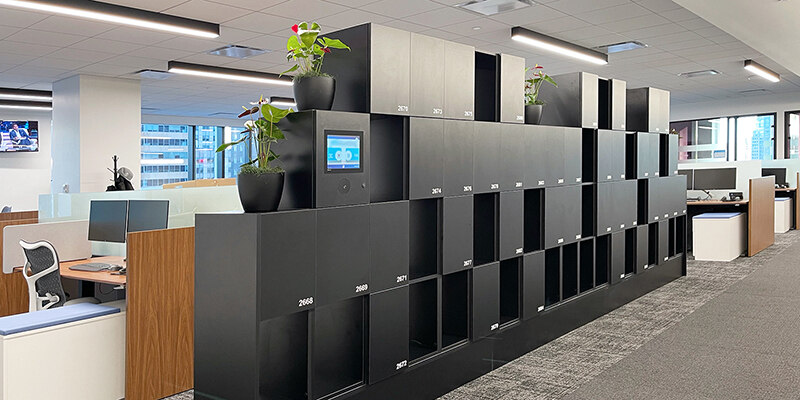
Storage Solutions Support Biophilia Design
First, let’s consider the benefit of high-density mobile storage in compacting the amount of space you need for your stuff. With your cabinets or shelves mounted on electric-powered or manual-assist carriages, you can regain as much as 50% of your floor space. This means you can open up the space to provide more people with views of the outdoors.
Moving to mobile shelving transformed the Georgia State’s Law Library. “We now have these amazing views. What’s more, the high-density shelving allowed us to preserve the outer areas, near the windows, for study and collaborative space. The light and openness of the area create a much more inviting space,” said associate dean Kristina Niedringhaus.
At a Daytona Florida student center, moveable storage helps Embry-Riddle Aeronautical University staff and students enjoy bright sunshine inside under sweeping, arched windows. The maximized space is something Melanie West, Associate Director for Access Services, says “makes me happy every day.”
A vertical carousel or lift also makes better use of space in warehouses, healthcare environments, or galleries. Your stuff is stored securely and accessible at the touch of a button. At the same time, you can open up the workspace to allow in more natural light and add a living wall element.
When putting in modular casework, automated lockers[1] , 4-post shelving or cabinetry, you might take a biophilic approach by selecting a natural wood or wood-grain finish. You can also choose to incorporate custom end panels or tops to display plants.
Using flat file cabinetry to hold your architectural designs and drawings or museum collection? You might select a counter-height flat file archival storage cabinet with a glass top to create a convenient work or display surface. Then, put some succulents or a rock garden in that top drawer.
Movable glass walls are another way to allow plenty of daylight into interior spaces. These walls also help with noise reduction, which can help people capture the tranquility of being outdoors.
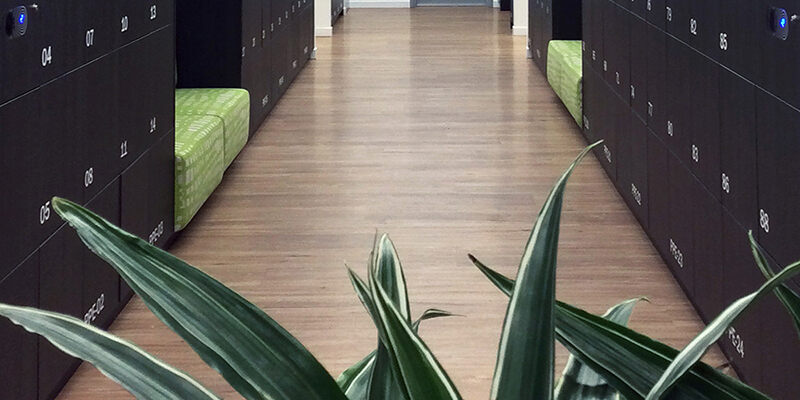
Patterson Pope Knows Biophilic Storage
Now that you can answer the question “what is biophilic design” and explain its benefits, you’re likely thinking of bringing the outdoors into your work space. A thoughtfully designed space incorporating biophilic elements demonstrates you care about your employees and sustainability too. Patterson Pope’s storage experts can suggest solutions that help you achieve your biophilic design goals.















